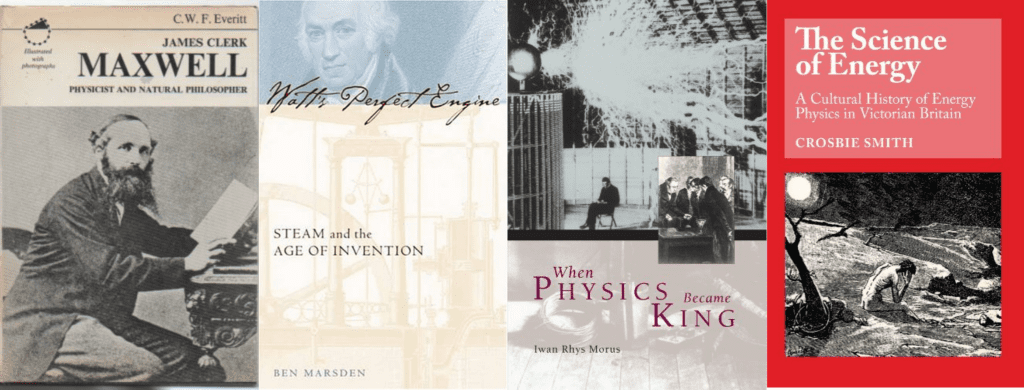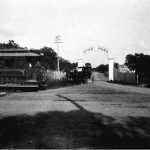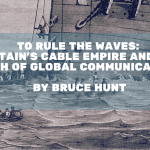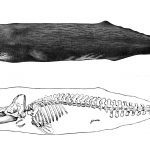Albert Einstein is perhaps the most recognizable figure of modern times. In 1999 Time magazine picked him as its “Person of the Century,” and in the public mind he certainly stands as the iconic scientist. He is generally pictured as an otherworldly genius, inhabiting a cosmic realm far above the mundane affairs of ordinary life, and in some ways he was. Yet when Einstein hit on his most famous and revolutionary idea, his Theory of Relativity, in 1905, he was working as a patent examiner at the Swiss Federal Patent Office in Bern, spending his days scrutinizing the designs of electrical machinery. How are we to reconcile our image of Einstein as the pure thinker, advancing scientific knowledge of the universe simply through the unfettered exercise of his mind, with the fact that he came up with revolutionary ideas while working in the thoroughly practical and technological setting of a patent office?
In Pursuing Power and Light: Technology and Physics from James Watt to Albert Einstein, I’ve tried to show that Einstein’s situation was really not so anomalous and that physics and technology had been tightly intertwined for more than a century before he went to work in the Swiss patent office. In fact, many of the most important advances in physics in the nineteenth and early twentieth centuries — including aspects of Einstein’s own relativity theory — had deep roots in the technologies that, in the same period, had so profoundly transformed material life. When the nineteenth century began, everyday life in even the most prosperous and technologically developed parts of the world hardly differed, in many basic ways, from that of the ancients. People still relied on their own muscles, or those of their horses and oxen, to carry their loads and pull their plows; on the wind to drive the sails of their ships; and on falling water to turn their mill wheels and grind their grain. By the end of the eighteenth century, there had been some first efforts to harness the power of steam, but at first it was used for little more than pumping water out of some mines in England. Transportation and communications remained, by later standards, woefully slow; a message could travel no faster than the person who carried it, and it typically took weeks or months for a traveler to cross an ocean or a continent.

By 1905, when Einstein first began to formulate his new conceptions of time and space, the world was very different. Steam engines and turbines were driving giant factories and power plants, and networks of electrical lines were spreading power and light through cities around the globe. Railroads and steamships had reduced travel times from weeks or months to a few days; the first automobiles had begun to appear on the roads and the first airplanes in the skies. Communication had not just been sped up, but had become almost instantaneous; a vast network of telegraph cables circled the globe, and telephone lines now carried distant voices right into one’s home. Wireless telegraphy had begun to appear, and the advent of radio broadcasting was just around the corner.
Along with these technological changes came equally sweeping transformations in the scientific understanding of matter, heat, energy, and electromagnetism. But the relationship between this new scientific knowledge and these new technologies was not always quite what one might expect. Today technology is often seen, or even defined, as simply “applied science,” as abstract knowledge cast into the form of concrete and useful devices. When we look more closely at some of the most important technologies of the nineteenth century, however, we find that the arrow of influence ran in the opposite direction, from technology to science. Historians of science and technology have often remarked that the steam engine did far more for science than science ever did for the steam engine. When Thomas Savery and Thomas Newcomen built the first practical steam engines in the years around 1700, they were guided in part by ideas of their own about heat and pressure, but they didn’t draw on any store of solid scientific knowledge about work and energy, for no such body of knowledge yet existed. Even James Watt’s famous improvements in the efficiency of steam engines were based more on inspired tinkering and careful experimentation than on a knowledge of anything resembling the modern laws of thermodynamics. The first steam engines did not emerge from an understanding of the fundamental laws of heat and energy; rather, those laws themselves emerged from the efforts of Sadi Carnot and others in the nineteenth century to analyze the workings of the steam engines they already saw around them.
Much of my own research concerns the history of electrical science in the nineteenth century, and here we find a very similar story. Beginning in the 1820s, electrical inventors took up a few basic scientific discoveries, particularly Alessandro Volta’s electric battery, and began to make them into practical devices, guided more by trial and error than by any deep scientific understanding. By the 1830s, they were building working telegraphs, and within a decade entrepreneurs in both Europe and America were spreading their networks of wires across the countryside. Soon they began to run into puzzling phenomena that scientists had never encountered in their laboratories, and a rich new field of scientific research began to open up. This was especially true after British telegraphers took to laying insulated cables beneath the sea, first across the English Channel in 1851 and then, in an especially bold attempt, across the Atlantic in 1858. The “retardation” and distortion that electrical signals suffered in passing along a cable pointed toward an influence coming from outside the wire itself — from what British physicists began to think of as the electromagnetic “field” that, they said, filled the space around charges, currents, and magnets. Field theory cast all of electromagnetism into a new and clearer light and proved immensely useful not only in telegraphy, the technological ground from which it had grown, but also in the design of motors, dynamos, and the rest of what became the electric power system.

When Albert Einstein was hired by the Swiss patent office, it was largely for his expertise in field theory, which was important in evaluating designs for electrical machinery. When he formulated his Theory of Relativity, he drew on field theory and on puzzles that had come up with the design of motors and dynamos. Of course, Einstein’s ideas would carry him into much wider realms, but it is worth bearing in mind how deeply his work, like that of his nineteenth-century predecessors, was rooted in the technological context of the time.

Ben Marsden, Watt’s Perfect Engine: Steam and Age of Invention, (2002).
The best brief account of the beginnings of the Age of Steam. Marsden paints a lively picture of James Watt in his own time, and also recounts the mythologizing of the heroic inventor that set in even before his death.
Iwan Rhys Morus, When Physics Became King, (2005).
During the nineteenth century, physics moved from the periphery of the scientific world to its core. Using the tools of cultural history, Morus shows how the new community of physicists managed to make their discipline “king” and explores the effects this new status had physics itself and on other disciplines that sought to model themselves on it.
Crosbie Smith, The Science of Energy: A Cultural History of Energy, (1998). Energy has become one of the central concerns of the modern world, yet the whole idea that there is something called “energy” dates only from the mid-nineteenth century. Focusing on a group of “North British” scientists and engineers, Smith shows how steam technology, Calvinist religion, and personal ambitions combined to produce the new science of energy, and explores how deeply the new concept reshaped our conceptions of the world.
C. W. F. Everitt, James Clerk Maxwell, Physicist and Natural Philosopher, (1975).
This short book is the best place to turn for a clear and accessible account of the life and work of the Scottish physicist whose work revolutionized our understanding of both thermodynamics and electromagnetism. Maxwell is little known to the general public today, but physicists consistently rank him behind only Newton and Einstein. Everitt’s book will show you why.
Jill Jonnes, Empires of Light: Edison, Tesla, Westinghouse, and the Race to Electrify the World, (2003).
Most of us give little thought to the electric power system that surrounds us—until it breaks down and plunges us into darkness. Building her story around three striking personalities, Jonnes tells how that vast system came to be built and why it took the shape that, for the most part, it still has today.
Photo Credits:
An Early Steam Engine, Volta’s Battery, Electric Street Lights in Paris (Wikimedia Commons, modified).




